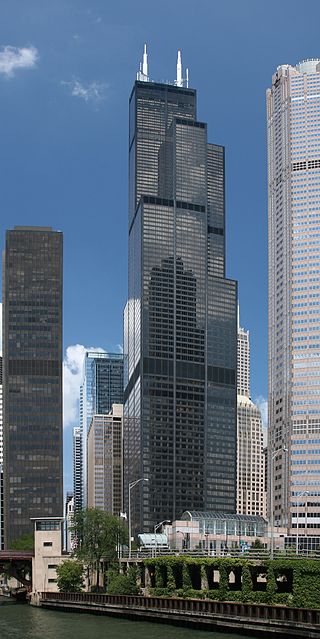
The buildings and architecture of Chicago reflect the city's history and multicultural heritage, featuring prominent buildings in a variety of styles. Most structures downtown were destroyed by the Great Chicago Fire in 1871.

Fazlur Rahman Khan was a Bangladeshi-American structural engineer and architect, who initiated important structural systems for skyscrapers. Considered the "father of tubular designs" for high-rises, Khan was also a pioneer in computer-aided design (CAD). He was the designer of the Sears Tower, since renamed Willis Tower, the tallest building in the world from 1973 until 1998, and the 100-story John Hancock Center.

Bruce John Graham was a Colombian-born Peruvian-American architect. Graham built buildings all over the world and was deeply involved with evolving the Burnham Plan of Chicago. Among his most notable buildings are the Inland Steel Building, the Willis Tower, and the John Hancock Center. He was also responsible for planning the Broadgate and Canary Wharf developments in London.
Roger Duffy is an American architect, known for rigorous and unconventional approach to design. Now retired, he worked as a partner at the firm Skidmore, Owings & Merrill. He was a design partner in the New York office from 1995 until 2018, and is a member of the American Institute of Architects and the League Circle of the Architectural League of New York.

David Magie Childs is an American architect and chairman of the architectural firm Skidmore, Owings & Merrill. He is the architect of the new One World Trade Center in New York City.

TheAl Hamra Tower is a skyscraper in Kuwait City, Kuwait. It is the tallest building in Kuwait. Construction of the skyscraper started in 2005. It was completed in 2011. Designed by architectural firms Skidmore, Owings & Merrill and Ramshir and Callison, it is the tallest curved concrete skyscraper in the world, and the thirty-sixth tallest building in the world at 414 m (1,358 ft).
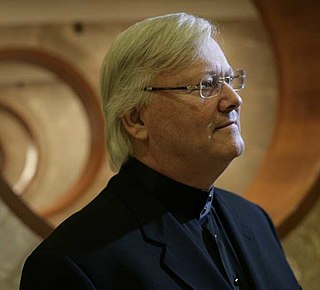
Adrian D. Smith is an American architect. He designed the world's tallest structure, Burj Khalifa, as well as the building projected to surpass it, the Jeddah Tower. A long-time principal of Skidmore, Owings & Merrill, he founded his own architectural partnership firm Adrian Smith + Gordon Gill Architecture in Chicago in 2006. Among his other projects, he was the senior architect for Central Park Tower in New York City, Trump International Hotel & Tower in Chicago, the Jin Mao Tower in Shanghai, and Zifeng Tower in Nanjing.

Adrian Smith + Gordon Gill Architecture (AS+GG), an architecture firm and design firm based in Chicago, is engaged in the design and development of energy-efficient and sustainable architecture. AS+GG designs buildings, cities, masterplans and components of these, for an international clientele, with projects located throughout the world. The primary uses of these designs are civic, commercial, cultural, hospitality, residential and mixed-use. AS+GG also specializes in supertall skyscrapers, such as the Jeddah Tower, which will overtake the Burj Khalifa as the world's tallest building when completed.

Nathaniel Alexander Owings was an American architect, a founding partner of Skidmore, Owings & Merrill, which became one of the largest architectural firms in the United States and the world. Owings viewed skyscrapers as his firm's specialty. His reputation rested on his ability to be what he called "the catalyst," the person in his firm who ironed out differences among clients, contractors and planning commissions.
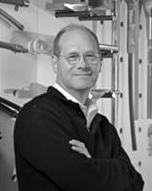
William Frazier Baker is an American structural engineer known for engineering the Burj Khalifa, the world's tallest building/man-made structure and a number of other well known buildings. He is currently a structural engineering partner in the Chicago office of Skidmore, Owings & Merrill, LLP (SOM).
T. J. Gottesdiener is an architect and managing partner of the New York office of Skidmore, Owings & Merrill (SOM). A graduate of Cooper Union’s Irwin S. Chanin School of Architecture, Gottesdiener joined SOM in 1980 and was made Partner in 1994. He lives with his wife in New York City; they have one son.

Ross Wimer, FAIA is an American architect, known for integrating the rigor and logic of engineering into his designs. Until October 2013, he was a design director in the Chicago office of Skidmore, Owings & Merrill, LLP. During his tenure at SOM from 1995 to 2013, he created architectural projects in over 20 cities on five continents. Mr. Wimer is a Fellow of the American Institute of Architects. He currently leads AECOM's architecture practice in the Americas.

Myron Goldsmith was an American architect and designer. He was a student of Mies van der Rohe and Pier Luigi Nervi before designing 40 projects at Skidmore, Owings & Merrill from 1955 to 1983. His last 16 years at the firm he was a general partner in its Chicago office. His best known project is the McMath–Pierce solar telescope building constructed in 1962 at the Kitt Peak National Observatory in Arizona. It is visited by an estimated 100,000 people a year.

George J. Efstathiou, FAIA, RIBA is an American architect of Greek descent. George joined Skidmore, Owings and Merrill, LLP (SOM) in 1974, where he served as Managing Partner and later Consulting Partner in the Chicago office until 2016. He is currently leading the consulting practice of Efstathiou Consulting LLC which serves clients in the architecture, planning, interiors design as well as others in the real estate and corporate communities.
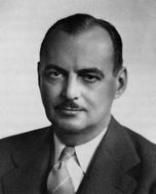
John Ogden Merrill was an American architect and structural engineer. He was chiefly responsible for the design and construction of the United States Air Force Academy campus and for the development of Oak Ridge, Tennessee where the atomic bomb was developed. He was a partner of the international architectural firm of Skidmore, Owings & Merrill.
Srinivasa "Hal" Iyengar was an Indian American civil engineer and a senior structural consultant, who has been particularly instrumental in the development of innovative and efficient structural concepts and systems for high-rise, long-span and stadium structures.
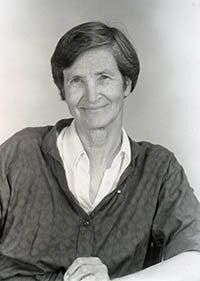
Natalie Griffin de Blois was an American architect. Entering the field in 1944, she became one of the earliest prominent women in the male-dominated profession. She was a partner for many years in the firm of Skidmore, Owings and Merrill. Her notable works include the Pepsi Cola Headquarters, Lever House, and the Union Carbide Building in New York City, the Equitable Building in Chicago, the low-rise portions of the Ford World Headquarters in Dearborn, Michigan, and the Connecticut General Life Insurance Company Headquarters in Bloomfield, Connecticut. Several of de Blois' buildings are among the tallest woman-designed buildings in the world. She later taught architecture at the University of Texas in the 1980s and 1990s.
Marilyn Jordan Taylor is an American architect, who has been a partner at Skidmore, Owings & Merrill since the early 1980s and served as its first female chairman. She specializes in urban architectural projects and designed the master plan for the Manhattanville expansion, the Consolidated Edison East River Greenway as well as airports from the John F. Kennedy International Airport terminal 4 expansion to the SkyCity at the Hong Kong International Airport. Between 2008 and 2016, she served as the Dean of the University of Pennsylvania School of Design.

The Cook County Administration Building is a skyscraper located at 69 West Washington Street in Chicago, Illinois. The building, constructed between the years 1962 and 1964, is 475 ft tall, and contains 35 floors. It has a concrete structure. The building, engineered by Fazlur Khan of the firm Skidmore, Owings & Merrill, is notable for innovating the tube-within-a-tube structural system.






















